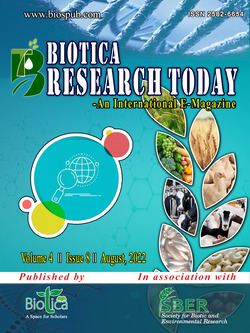
Applicability of Gottingen Minipigs as a Non-Rodent Model in Biomedical Research
Leonal Rabins S.
ICAR-KVK, Tenkasi, Tamil Nadu (627 852), India
Sangeetha S.*
Dept. of Pharmacology, Sri Lakshmi Narayana Institute of Medical Sciences, Pondicherry (605 502), India
DOI: NIL
Keywords: Animal model, Biomedical research, Gottingen Minipig, Non-rodent
Abstract
Use of Gottingen minipig as an animal model increased over years in the biomedical and toxicological industries due to the fact its anatomy and physiology is very similar to humans, and is prolific reproducers. Pigs used for various ailments that cannot be mimicked on rodent models. This is because minipigs possess physiological traits makes more comparable to human beings in countless ways. Pigs moreover considered ‘standard’ species in xenotransplantation research areas. On the contrary, the porcine immune system reported to be closer to human beings. Digestive, cardiovascular and urogenital system resembles the human systems, while the anatomy of the skin is very similar to the human skin. Gottingen minipig has contributed significantly to our understanding of disease and development of new therapies. The use of laboratory minipigs in biomedical research need good infrastructure animal facility, well suited animal husbandry practices and manipulation of different infectious pathogens are very important consideration.
Downloads
not found
Reference
Anonymous, 2010. Taking Good Care of Ellegard Gottingen Minipigs. In: Ellegard Gottingen Minipigs A/S. Available at: https://minipigs.dk/. Accessed on: 30.07.2022.
Mcanulty, P.A., Dayan, A.D., Ganderup, N.C., Hastings, K.L., 2012. The Minipig in Biomedical Research. 1st Edition, CRC Press, Florida, pp. 445-468. DOI: 10.1201/b11356.
National Research Council, 2010. Guide for the Care and Use of Laboratory Animals. 8th Edition, National Academy Press, Washington DC. p. 62. DOI: 10.17226/12910.
Stricker-Krongrad, A., Shoemake, C.R., Pereira, M.E., Gad, S., Brocksmith, D., Bouchard, G., 2016. Miniature swine breeds in toxicology and drug safety assessments: what to expect during clinical and pathology evaluations. Toxicol Pathol 44(3), 421-427. DOI: 10.1177/0192623315613337.
